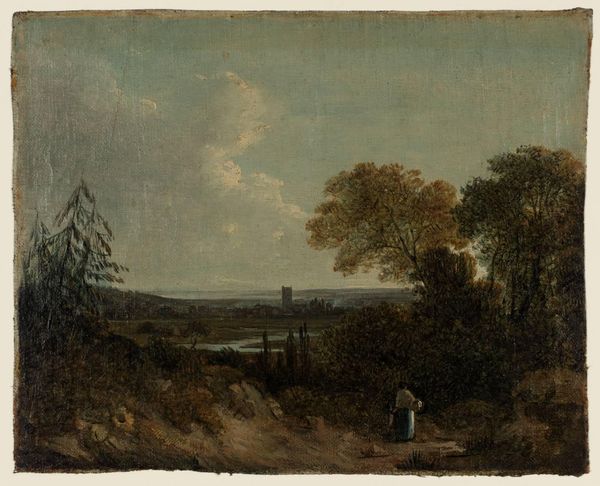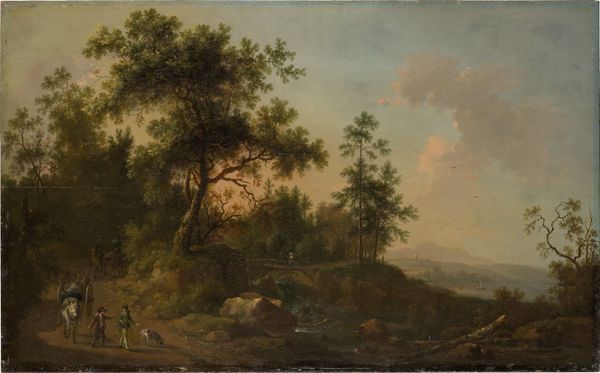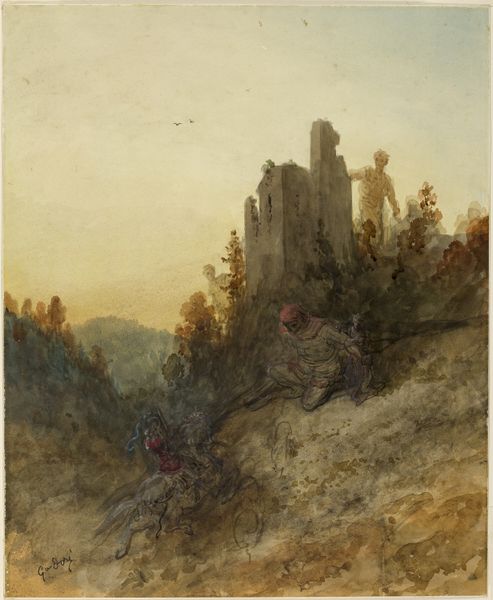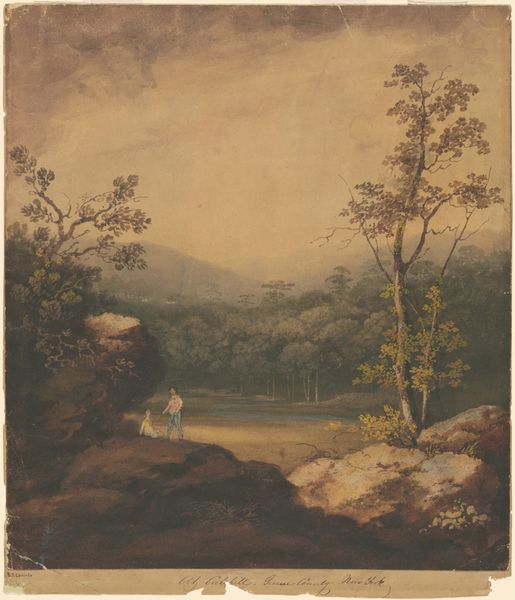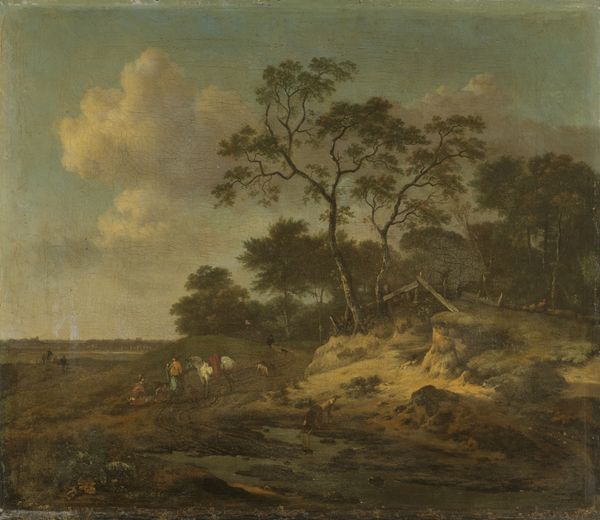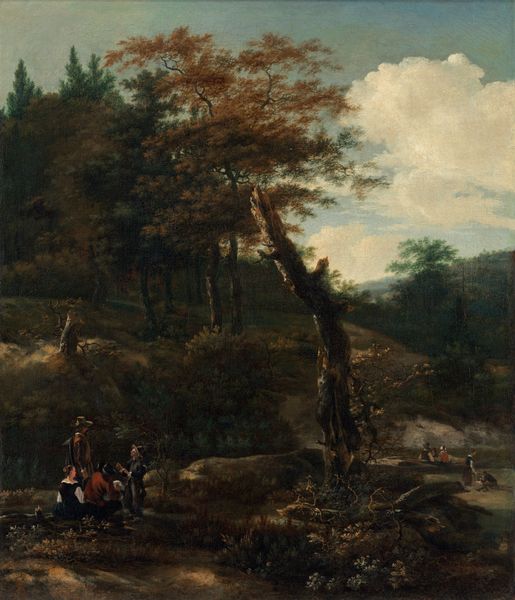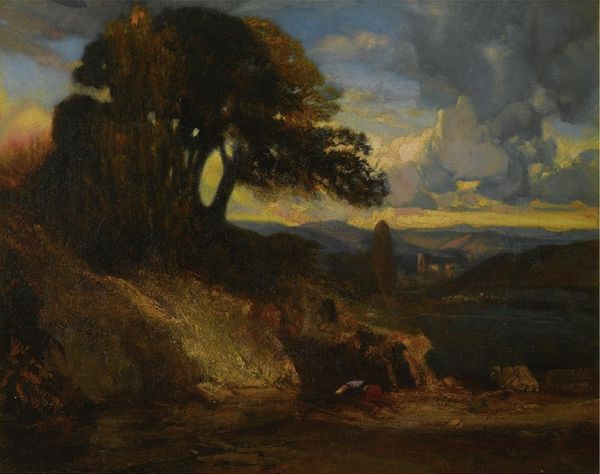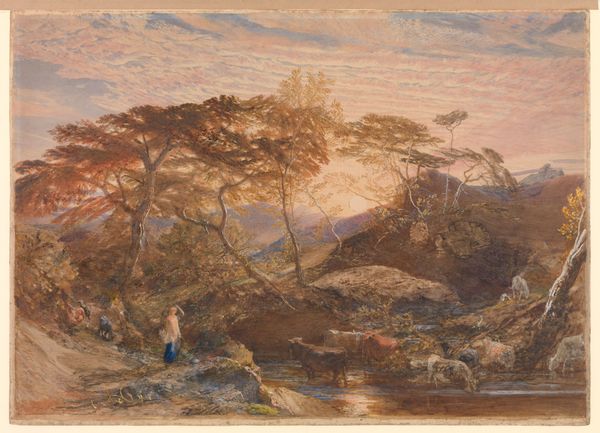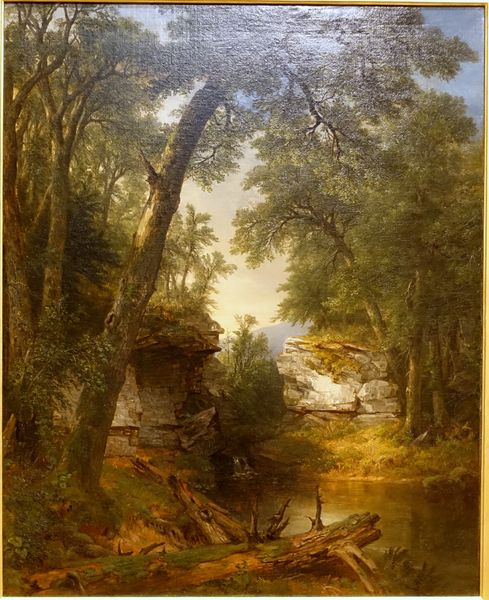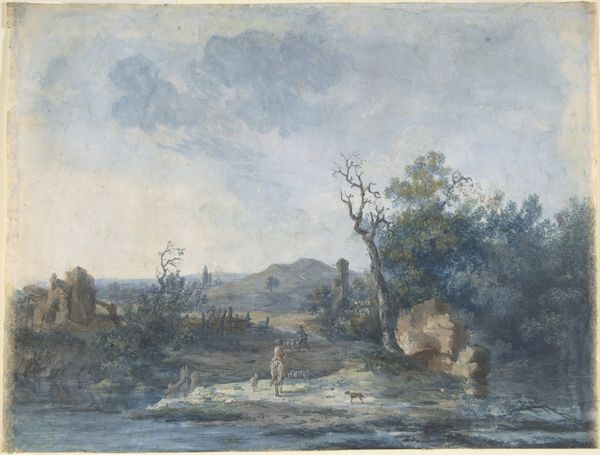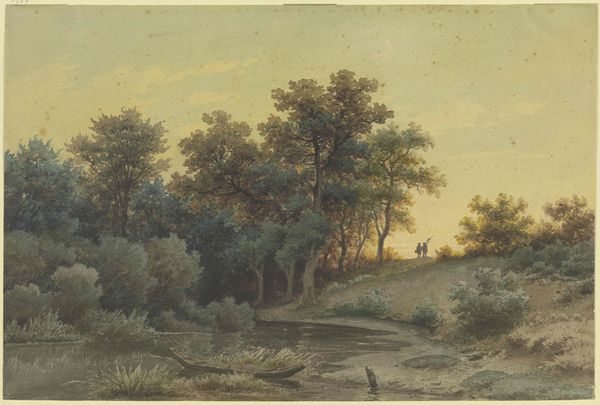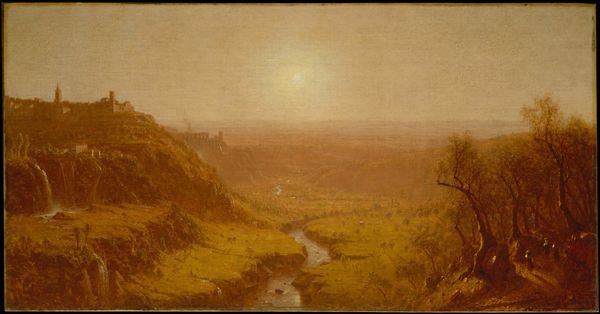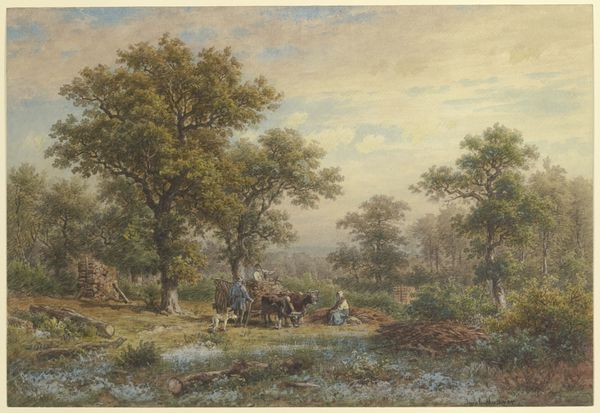
drawing, painting, watercolor
#
drawing
#
ink painting
#
painting
#
landscape
#
watercolor
#
romanticism
#
orientalism
#
watercolour illustration
#
surrealist
Dimensions: sheet: 44.6 x 30.8 cm (17 9/16 x 12 1/8 in.)
Copyright: National Gallery of Art: CC0 1.0
Curator: The delicate hues create such a peaceful atmosphere. There’s a real sense of stillness. Editor: Indeed. Let’s delve into Gabriel Hippolyte Lebas’s “Sunset in an Oriental Landscape." While undated, it offers a window into 19th-century European fascinations with the East. The piece, executed with watercolor and ink, reveals the romantic allure of distant lands. Curator: Romantic, yes, in its idealized composition. But tell me about the tangible elements. Look at the varying brushstrokes, suggesting the abundance of flora; the trees almost feel like an impressionistic texture, standing in contrast to the structural rigidity of the ruined buildings. What does it convey about Lebas’s process? Editor: His technique strikes a balance between observation and artistic license. Consider the implications of using watercolor. Its translucency lends itself perfectly to capturing the fleeting quality of light, almost acting as a veil for the composition. The paper choice would impact absorbency. Then we must ponder: Who had access to such exotic imagery and what assumptions are at play in its rendering for the European consumer? Curator: Precisely! How is orientalism at play? This sunset aestheticizes and transforms labor into an alluring mirage, obscuring the reality of social and economic conditions through his painting style. Editor: An interesting angle. Yet, formally, it adheres to certain conventions, doesn’t it? Horizon line placing emphasis on the sublime scope, balanced asymmetrical elements guide the gaze from foliage and building remains toward that beckoning glow of sun on the horizon. It is hard not to interpret this with symbolism on decline of empires or a search of transcendence. Curator: True, but whose symbolism are we interpreting and what labour allowed that pigment to be created in that form? Romanticism uses similar landscape strategies of awe, just look to England and Germany. Its composition also draws on the same material and cultural conditions from those other paintings to produce its effect. What does Lebas hope to say about himself in this piece by putting those elements to work in it? Editor: An endless discussion that only reinforces art as not existing within its own cultural or formal values, doesn't it? Thank you. Curator: Likewise. Understanding how art shapes culture enriches our viewing experience.
Comments
No comments
Be the first to comment and join the conversation on the ultimate creative platform.
